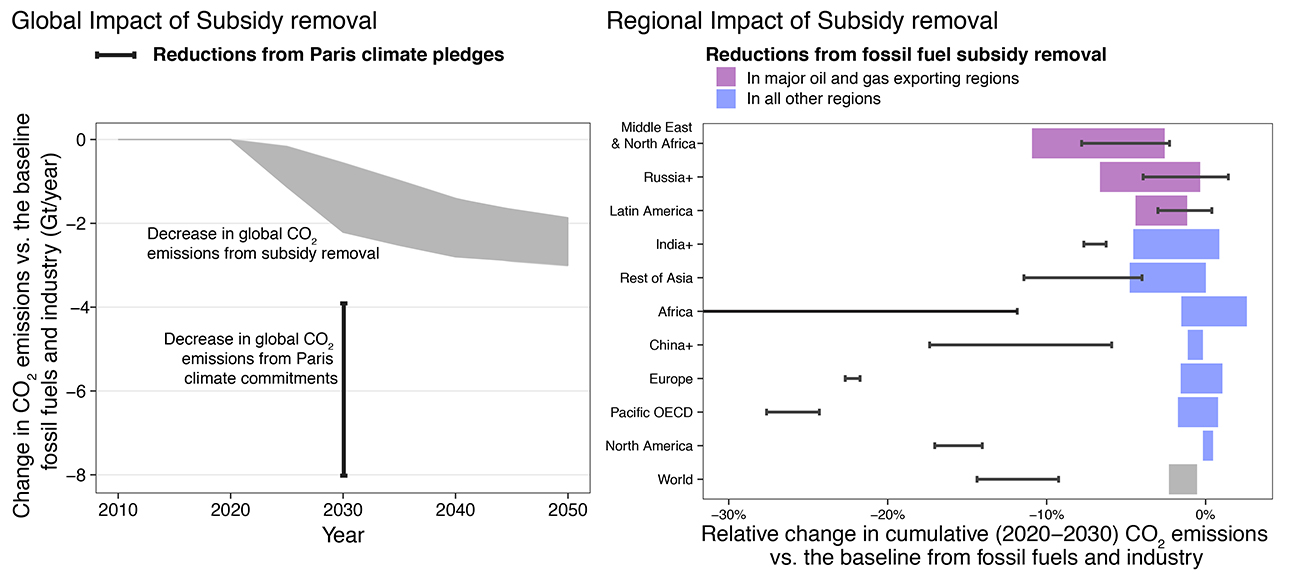
The climate implications of today’s energy policies
What do today’s energy policies add up to and how do they differ by region? Although climate change is a global problem, the policies to address it will be enacted at the national and local level. We need to understand the emissions implications of today’s energy policies to know if we are on the right track to meet global climate targets and what needs to be clarified within policy pledges to reduce uncertainty. Two recent papers from the IIASA Energy Program further our understanding of today’s policy proposals and their regional implications.
A study published in Nature Communications [1], carried out the first comprehensive uncertainty assessment of countries’ national climate pledges put forward during the Paris climate agreement (known as nationally determined contributions or NDCs) at both the global and regional scale. It robustly shows that current proposals are both imprecise and inadequate. The vagueness in pledges results in a large spread in what emission levels can be expected for the year 2030, which even if strengthened afterwards would fail to achieve the ambitions of the Paris Agreement’s temperature goal. The study identified China and India as two regions that contribute most to the overall uncertainty. As international negotiations are currently under way to define future rules for the formulation of and reporting on national pledges under the Paris Agreement, this study proposes several improvements to the NDCs reporting process, which would reduce overall uncertainty and increase accountability within international climate policy based on the most up-to-date science.
Another study led by IIASA researchers, published in Nature [2], looked into the global and regional effects of removing fossil fuel subsidies. It found that although fossil fuel subsidies amount to hundreds of billions of dollars, removing them would only slightly slow the growth of CO2 emissions, with the result that they would only be 1–5% lower by 2030 than if subsidies had been maintained. This equates to 0.5–2 gigatonnes (Gt/year) of CO2 by 2030–significantly less than the voluntary climate pledges made under the Paris Agreement–which add up to 4-8 Gt/year and are themselves not enough to limit warming to 2°C. Although the global effect on emissions is low, the impact varies between regions. The largest effects of removing subsidies were found in regions that export oil and gas, such as Latin America, the Middle East, North Africa, and Russia. In these regions, the emissions savings caused by subsidy removal would either equal or exceed their climate pledges. It is also these oil and gas exporting regions whose government budgets are most strained under low oil prices and for whom subsidy removal would thus be a welcome relief.
The regional differences highlight one very important aspect of subsidy removal that needs to be taken into consideration: the impacts on the poor. Fortunately, the highest numbers of poor people are concentrated in the regions where removal of subsidies will have the weakest effect on CO2 emissions. Removing subsidies in richer oil and gas exporting regions would therefore provide significantly greater emissions savings and have a less detrimental impact on the poor.
In 2017, Energy Program research outreach fed directly into several international and regional policy processes, as well as into the broader scientific community. The insights of the Nature Communications paper were featured in the UN Environment Programme Emissions Gap Report [3], which provides an annual overview of the state of the science on climate action and in which the IIASA Energy Program has been taking up leading roles. Energy Program researchers were invited to present their insights at the UN Framework Convention on Climate Change Research Dialogue, the EU Issue Group on NDCs, and at a special session dedicated to the implications of the Paris Agreement at the Fall Meeting of the American Geophysical Union, the world’s largest geoscience conference. The Nature paper was also covered by several news outlets including Scientific American.
References
[1] Rogelj J, Fricko O, Meinshausen M, Krey V, Zilliacus JJJ, & Riahi K (2017). Understanding the origin of Paris Agreement emission uncertainties. Nature Communications 8: e15748.
[2] Jewell J, McCollum D, Emmerling J, Bertram C, Gernaat DEHJ, Krey V, Paroussos L, Berger L, et al. (2018). Limited emission reductions from fuel subsidy removal except in energy exporting regions. Nature 554: 229-233.
[3] den Elzen M, Hohne N, Jiang K, Cantzler J, Drost P, Fransen T, Fekete H, Kuramochi T, et al. (2017). The emissions gap and its implications. In: The Emissions Gap Report 2017-A UN Environment Synthesis Report. pp. 11-26 Nairobi: United Nations Environment Programme (UNEP).
IIASA Contributors
Collaborators
- Potsdam Institute for Climate Impact Research, Germany
- Fondazione Eni Enrico Mattei, Italy
- Centro Euromediterraneo sui Cambiamenti Climatici, Italy
- Central European University, Hungary
- Copernicus Institute for Sustainable Development, University of Utrecht, Netherlands
- PBL Netherlands Environmental Assessment Agency, Netherlands
- National Technical University of Athens, Greece
- University College London, UK
- University of Melbourne, Australia
Further information
Other highlights
Top image copyright: Michael Gancharuk | Shutterstock





You must be logged in to post a comment.